Related Research Articles
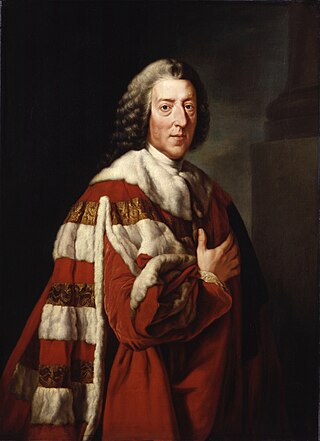
William Pitt, 1st Earl of Chatham, was a British Whig statesman who served as Prime Minister of Great Britain from 1766 to 1768. Historians call him "Chatham" or "Pitt the Elder" to distinguish him from his son William Pitt the Younger, who also served as prime minister. Pitt was also known as "the Great Commoner" because of his long-standing refusal to accept a title until 1766.
Chatham may refer to:
William Pitt most commonly refers to:
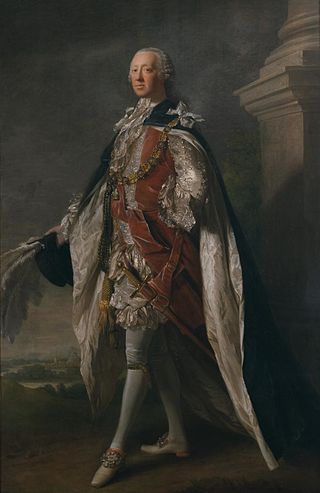
Richard Grenville-Temple, 2nd Earl Temple, KG, PC was a British politician and peer who served as Lord Privy Seal from 1757 to 1761. He is best known for his association with his brother-in-law William Pitt, serving with him in the Pitt–Newcastle ministry during Britain's participation in the Seven Years' War from 1756 to 1761. He resigned, along with Pitt, in 1761 in protest over the ministry's refusal to declare war on Spain.
Pitt most commonly refers to:
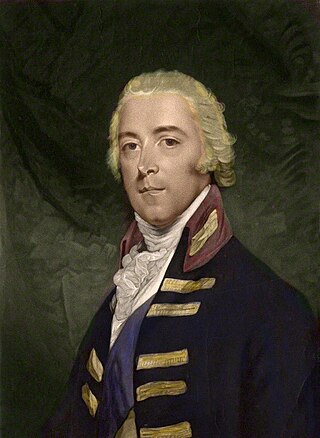
General John Pitt, 2nd Earl of Chatham, also 2nd Viscount Pitt and 2nd Baron Chatham, was a British soldier and politician. He spent a lengthy period in the cabinet but is best known for commanding the disastrous Walcheren Campaign of 1809.

Earl of Londonderry is a title that has been created three times in the Peerage of Ireland. The first creation came in 1622 in favour of Thomas Ridgeway, 1st Baron Ridgeway, who served as Treasurer of Ireland and was involved in the colonisation of Ulster. He had already been created a Baronet, of Torrington in the County of Devon, in 1611, Lord Ridgeway, Baron of Gallen-Ridgeway, in the Peerage of Ireland, in 1616, and was made Viscount Gallen-Ridgeway at the same time as he was granted the earldom, also in the Peerage of Ireland. The titles became extinct on the death of his great-grandson, the fourth Earl, in 1714.

Chatham Strait, or Shee ya xhaak in the Tlingit language, is a narrow passage of the Alexander Archipelago in the southeastern region of the U.S. state of Alaska. It separates Chichagof Island and Baranof Island to its west from Admiralty Island and Kuiu Island on its east.

Earl of Chatham, of Chatham in the County of Kent, was a title in the Peerage of Great Britain. It was created in 1766 for William Pitt the Elder on his appointment as Lord Privy Seal, along with the subsidiary title of Viscount Pitt, of Burton Pynsent in the County of Somerset, also in the Peerage of Great Britain.
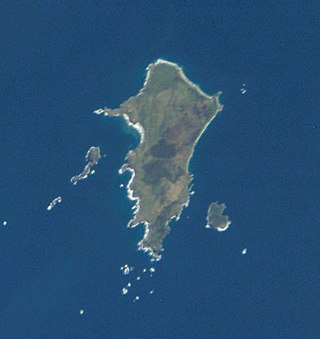
Pitt Island is the second largest island in New Zealand's Chatham Islands, with an area of 65 square kilometres (25 sq mi). It lies about 770 kilometres (480 mi) to the east of New Zealand's main islands, and about 20 kilometres (12 mi) to the southeast of Chatham Island, from which it is separated by Pitt Strait. The island is hilly; its highest point rises to 241 metres (791 ft) above sea level. As of 2011, Pitt Island had a population of about 38 people.
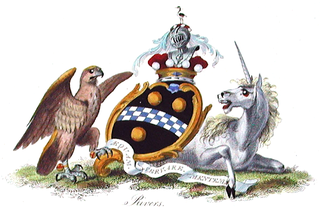
Baron Rivers was a title that was created four times in British history, twice in the Peerage of England, once in the Peerage of Great Britain and once in the Peerage of the United Kingdom.
The Kingdom of Great Britain was governed by a caretaker government in April–June 1757, after the King's dismissal of William Pitt led to the collapse of the Pitt–Devonshire ministry amid the Seven Years' War. William Cavendish, 4th Duke of Devonshire, continued as the nominal head of government.

Baron Camelford, of Boconnoc, in the County of Cornwall, was a title in the Peerage of Great Britain. It was created, as Lord Camelford, Baron of Boconnoc, on 5 January 1784 for Thomas Pitt, who had previously represented Old Sarum and Okehampton in Parliament. A member of the famous Pitt family, he was the eldest son of Thomas Pitt of Boconnoc; a great-grandson of Thomas Pitt, President of Madras, who purchased Boconnoc House; a great-nephew of Thomas Pitt, 1st Earl of Londonderry; a nephew of William Pitt, 1st Earl of Chatham and first cousin of William Pitt the Younger. Lord Camelford was also the father-in-law of William Grenville, 1st Baron Grenville. The title became extinct on the death of his only son, the 2nd Baron, who was killed in a duel in 1804.
Events from the year 1767 in Great Britain.

Hester Pitt, Countess of Chatham was the wife of William Pitt the Elder, 1st Earl of Chatham, who was prime minister of Great Britain from 1766 to 1768.

The Chatham ministry was a British government led by William Pitt, 1st Earl of Chatham that ruled between 1766 and 1768. Because of Pitt's former prominence before his title, it is sometimes referred to as the Pitt ministry. Unusually for a politician considered to be Prime Minister, Pitt was not First Lord of the Treasury during the administration, but instead held the post of Lord Privy Seal.
John Pitt (1698–1754) was a British Army officer, colonial administrator and politician who sat in the House of Commons between 1720 and 1734.

The Death of the Earl of Chatham is the title of a 1781 oil-on-canvas painting by Boston-born American artist John Singleton Copley. It depicts the collapse of William Pitt, 1st Earl of Chatham on 7 April 1778, during a debate in the House of Lords on the American War of Independence. Chatham is surrounded by peers of the realm, and the painting contains fifty-five portraits.
William Spry was a jurist and governor of Barbados.
The Pitt family were an English aristocratic family whose members included the Earls of Chatham, the Earls of Londonderry and the Barons Camelford. The family produced two British Prime Ministers: William Pitt, 1st Earl of Chatham, and his son William Pitt the Younger.